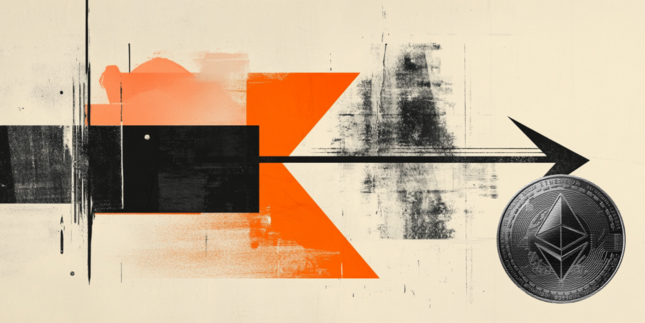Welcome to the Money Metals Midweek Memo, hosted by Mike Maharrey, where we discuss news and commentary related to sound money, precious metals markets, and the economy.
Today's focus is on silver, often overshadowed by gold but currently experiencing significant gains and attracting investor interest.
Silver's recent performance
Silver recently broke a key resistance level of $30 per ounce, marking the first time in over a decade it has reached this price. The last time silver surpassed $30, it quickly rose to nearly $50 per ounce in 2011. Despite a recent selloff bringing silver below $30, its performance is reminiscent of past bull runs.
Comparing Silver and Gold
While gold has been on a strong bull run, setting records over $2,400 an ounce twice this year, silver has outperformed gold in percentage terms. From its February low to its recent high, gold gained 21.7%, whereas silver surged 44.6%.
Mike Maharrey emphasizes this outperformance: "From its low point in February to its record high, gold gained about 21.7%. But in that same period, silver was up 44.6%."
Historically, silver often outperforms gold in bull markets due to its greater volatility and industrial demand.
Maharrey adds, "Silver has historically outperformed gold in a gold bull market, so if you're bullish on gold, you should be even more bullish on silver."
Industrial demand for Silver
Silver's price swings are influenced by its significant industrial use, accounting for 50-60% of annual demand. This percentage is growing due to green energy applications, particularly in solar panels.
By 2027, solar manufacturers may require over 20% of the current annual silver supply, and by 2050, they could use 85-98% of global reserves.
Maharrey notes, "Solar manufacturers will likely require over 20% of the current annual silver supply by 2027, and by 2050, solar panel production is projected to use approximately 85 to 98% of the current global silver reserves."
Silver's historical role as money
Silver has historically been used as a transactional currency due to its lower value by weight compared to gold. This makes it suitable for daily transactions, whereas gold is better for storing wealth.
Maharrey states, "Silver is money. It really is a daily natural form of money compared to gold, and it makes a perfect kind of money."
The Gold-Silver ratio
The gold-silver ratio (gold:silver ratio; gold-to-silver ratio), a tool to compare their prices, indicates that silver is historically underpriced. Currently hovering around 78:1, this ratio is above its 20-year average of 68:1, suggesting that silver has room to grow to close this gap.
"The current gold-silver ratio indicates that the price of silver still needs to increase by a pretty sizable amount to close that gap," says Maharrey.
Maharrey also explains the significance of the gold-silver ratio in historical context:
"In the modern era, that ratio has averaged between 40:1 and 60:1, and if you go back over the last 20 years, it's averaged 68:1. In other words, even with the recent rally in the silver price that has closed the gold-silver ratio up a bit, it's still above the 20-year average and far above the average in the modern era."
He further elaborates on how the ratio can signal investment opportunities:
"When the gold-silver ratio gets far above the high end of that historical average, it tends to snap back to the mean with a vengeance. For instance, in 2020, the gold-silver ratio climbed to a record of 123:1 as COVID hysteria gripped the world, and then it plunged to around 60:1 as central banks around the world cranked up the money creation machine."
Supply and demand dynamics
Silver demand has outstripped supply for the third consecutive year in 2023. While total demand dropped 7% to 1.2 billion ounces from a record high in 2022, mine output also fell by 1% to 843.5 million ounces. This led to a significant structural deficit of 184.3 million ounces.
Industrial demand, particularly from green energy applications, continues to drive silver consumption.
Maharrey highlights, "Today, silver demand outstripped silver supply for the third straight year in 2023."
Insights from Peter Krauth
Mike Maharrey also references insights from Peter Krauth, author of The Great Silver Bull.
Maharrey praises Krauth's expertise:
"I interviewed Peter Krauth, he's the author of The Great Silver Bull. This was a few weeks back, and that's a great book by the way."
Krauth explains the historical use of silver as money:
"He pointed out that silver was probably used as money even before gold. Here's how he explained why: 'Because silver relative to gold has a lower value by weight, it is easier to use in daily transactions. I've heard before a few times that it's estimated that throughout history there has been more business transacted through silver than gold because gold is a way that you store wealth rather than use it to transact.'"
Global demand for Silver
Investment demand for silver is rising, especially in Asia. China's silver stock at the Shanghai Futures Exchange has fallen to a 10-year low, with investment demand causing premiums to run about 10% over New York prices. Similarly, India's silver imports in the first four months of 2024 exceeded the total for 2023, driven by solar panel production and investor interest.
Conclusion
Given the strong supply and demand dynamics, historical underpricing relative to gold, and rising industrial use, silver presents a compelling investment opportunity. The gold-silver ratio suggests silver is still significantly undervalued, making it an attractive option for diversifying investment portfolios.
Maharrey concludes, "Given all of this, the Silver Institute projects total silver demand will grow by a healthy 2% this year, which almost certainly means another big market deficit."
For those interested in investing in silver, now may be a good time to consider purchasing.
Money Metals Exchange and its staff do not act as personal investment advisors for any specific individual. Nor do we advocate the purchase or sale of any regulated security listed on any exchange for any specific individual. Readers and customers should be aware that, although our track record is excellent, investment markets have inherent risks and there can be no guarantee of future profits. Likewise, our past performance does not assure the same future. You are responsible for your investment decisions, and they should be made in consultation with your own advisors. By purchasing through Money Metals, you understand our company not responsible for any losses caused by your investment decisions, nor do we have any claim to any market gains you may enjoy. This Website is provided “as is,” and Money Metals disclaims all warranties (express or implied) and any and all responsibility or liability for the accuracy, legality, reliability, or availability of any content on the Website.
Recommended Content
Editors’ Picks

AUD/USD: Rally continues to target 0.6400
AUD/USD’s upside momentum remained unchallenged on Tuesday, with the pair rising for the fifth consecutive daily advance and coming at shouting distance from the key resistance area in the 0.6400 neighbourhood.

EUR/USD: Correction has further legs to go
EUR/USD remained under pressure, adding to Monday’s retracement and breaking below the key 1.1300 support to reach two-day troughs, leaving the door open to the continuation of this correction in the short-term horizon.

Gold embarks on a consolidative move around $3,200
Gold is holding its own on Tuesday, trading just above $3,200 per troy ounce as it bounces back from earlier losses. While a more upbeat risk sentiment is bolstering the rebound, lingering concerns over a deepening global trade rift have prevented XAU/USD from rallying too aggressively.

Ethereum staking balance declines as whales resume buying
Ethereum is down 2% on Tuesday following a 120K ETH decline in the net balance of staking protocols in the past five days. While the decreasing staking balance could accelerate selling pressure, the resumption of whale buying activity could help the top altcoin defend a key ascending triangle's support.

Is a recession looming?
Wall Street skyrockets after Trump announces tariff delay. But gains remain limited as Trade War with China continues. Recession odds have eased, but investors remain fearful. The worst may not be over, deeper market wounds still possible.

The Best brokers to trade EUR/USD
SPONSORED Discover the top brokers for trading EUR/USD in 2025. Our list features brokers with competitive spreads, fast execution, and powerful platforms. Whether you're a beginner or an expert, find the right partner to navigate the dynamic Forex market.